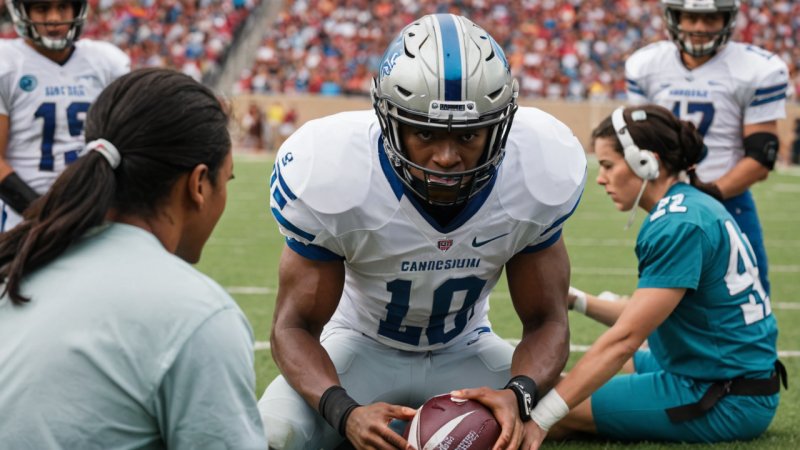Concussions are a critical concern in sports, especially in contact games like football and rugby, where the risk of head injuries is significantly heightened. Understanding the signs and symptoms of a concussion is essential for athletes, coaches, and parents alike, as early detection can lead to better outcomes and safer sports practices. This article delves into the nature of concussions, the signs to watch for, and the necessary steps to take if a concussion is suspected, ensuring that safety remains a priority in athletic environments.
What is a Concussion?
A concussion is a type of traumatic brain injury caused by a blow to the head or body that causes the brain to move rapidly within the skull. This sudden movement can create chemical changes in the brain and sometimes damage brain cells. Concussions can happen in any sport, but contact sports like football, rugby, and ice hockey are particularly prone to these injuries.
Causes of Concussions
Concussions can result from various scenarios, including:
- Direct Impact: A blow to the head from another player, the ground, or equipment.
- Whiplash Effect: Rapid acceleration or deceleration, leading to the head snapping back and forth.
- Falls: Losing balance and hitting the ground can also lead to concussions.
Recognizing the Signs and Symptoms
Recognizing the signs of a concussion is crucial for prompt intervention. Symptoms can manifest immediately following an injury or may take hours or even days to appear. They can be categorized into physical, cognitive, emotional, and sleep-related symptoms.
Physical Symptoms
- Headache or a feeling of pressure in the head
- Nausea or vomiting
- Dizziness or balance problems
- Blurred or double vision
- Tiredness or lethargy
Cognitive Symptoms
- Difficulty concentrating or remembering
- Confusion about events or instructions
- Feeling mentally foggy or slowed down
Emotional Symptoms
- Irritability or mood swings
- Increased anxiety or sadness
- Feeling more emotional than usual
Sleep-Related Symptoms
- Difficulty falling asleep
- Sleeping more or less than usual
- Feeling drowsy during the day
Immediate Actions to Take
If a concussion is suspected, immediate action is necessary to ensure the athlete's safety. Here are steps to follow:
1. Remove the Athlete from Play
The first and most critical step is to remove the player from the game or practice. Continuing to play can worsen the injury and lead to severe consequences.
2. Assess Symptoms
Conduct a brief assessment of the athlete's symptoms. Ask about headaches, dizziness, balance, and any other signs mentioned earlier. This can help determine the severity.
3. Seek Medical Attention
It is crucial to consult with a healthcare professional who specializes in head injuries. They can perform a thorough evaluation and recommend appropriate treatment.
Long-term Implications of Concussions
While many athletes recover from concussions without long-term effects, repeated concussions can lead to serious conditions such as:
Post-Concussion Syndrome
Some athletes may experience symptoms that persist for weeks or months after the injury, which can affect their daily lives and performance.
Chronic Traumatic Encephalopathy (CTE)
CTE is a progressive degenerative disease found in individuals who have suffered repeated head injuries. It can lead to severe cognitive and emotional problems later in life.
Prevention Strategies
Preventing concussions is equally as important as recognizing them. Here are some strategies to minimize the risk:
1. Education and Training
Educate athletes, coaches, and parents about the dangers of concussions and the importance of reporting symptoms immediately.
2. Use of Protective Gear
Ensure that athletes wear appropriate protective equipment, such as helmets and mouthguards, which can help reduce the risk of head injuries.
3. Encourage Safe Play
Promote fair play, proper tackling techniques, and respect for opponents to minimize the chances of head injuries during games.
Conclusion
Understanding the signs of a concussion in athletes is crucial for ensuring their safety and well-being. By recognizing symptoms early and taking appropriate actions, we can help protect athletes from the potential long-term consequences of head injuries. Education, prevention strategies, and prompt medical attention are all key components in fostering a safer sporting environment. As the awareness of concussions continues to grow, it is essential for everyone involved in athletics to prioritize safety while still encouraging performance and enjoyment in sports.






